|
News Archive: June 1-30 |

|
Griffin again defends decision on eve of liftoff
NASA Administrator Mike Griffin, answering questions on the eve of shuttle Discovery's launch Saturday, said Friday he firmly believes his decision to approve launch over objections from NASA's top safety manager and chief engineer was correct and based strictly on the technical merits of the argument.
 FULL STORY FULL STORY
 |  |

|
 |
Discovery on track for launch as options outlined
The shuttle Discovery's countdown is on track for a launch attempt Saturday at 3:49 p.m., weather permitting. Forecasters continue to predict a 60 percent chance of unacceptable weather Saturday, Sunday and Monday due to electrically charged anvil clouds within 23 miles of the launch area and a possibility of showers.
 FULL STORY FULL STORY
 |  |

|
 |

Additional coverage for subscribers:
 VIDEO:
FRIDAY MORNING COUNTDOWN UPDATE DIAL-UP | BROADBAND VIDEO:
FRIDAY MORNING COUNTDOWN UPDATE DIAL-UP | BROADBAND
 SUBSCRIBE NOW SUBSCRIBE NOW

|
Space shuttle preview:
Indepth look at test flight
After a frustrating year of redesign, testing and controversy, NASA is finally ready to launch the shuttle Discovery July 1 on a space station servicing and repair mission. It will be the first flight in shuttle history with a system - foam bracket insulators on the external fuel tank - officially deemed an unacceptable risk by the agency's top safety manager and chief engineer. This is our 14,000-word preview of Discovery's mission.
 FULL REPORT FULL REPORT
 |  |

|
 |

Additional coverage for subscribers:
 VIDEO:
SHUTTLE MISSION PREVIEW DIAL-UP | BROADBAND VIDEO:
SHUTTLE MISSION PREVIEW DIAL-UP | BROADBAND
 VIDEO:
STATION ACTIVITIES ON STS-121 DIAL-UP | BROADBAND VIDEO:
STATION ACTIVITIES ON STS-121 DIAL-UP | BROADBAND
 VIDEO:
PREVIEW OF DISCOVERY'S SPACEWALKS DIAL-UP | BROADBAND VIDEO:
PREVIEW OF DISCOVERY'S SPACEWALKS DIAL-UP | BROADBAND
 VIDEO:
THE ASTRONAUTS MEET THE PRESS DIAL-UP | BROADBAND VIDEO:
THE ASTRONAUTS MEET THE PRESS DIAL-UP | BROADBAND
 VIDEO: SHUTTLE AND ISS PROGRAM PERSPECTIVE VIDEO: SHUTTLE AND ISS PROGRAM PERSPECTIVE
DIAL-UP: part 1 and part 2
BROADBAND: part 1 and part 2
 SUBSCRIBE NOW SUBSCRIBE NOW

|
Mission management team 'go' for Saturday launch
"I'm very happy to report that we just had our launch-minus two-day mission management team review and other than some questionable weather, we have no constraints to launch," said John Shannon, chairman of the mission management team. "It's been a long year, with a lot of hard work by all of the team members to get to this point and I just want to say I'm extremely proud of the team and we are ready to go for Saturday and do what NASA does best."
 FULL STORY FULL STORY
 |  |

|
 |

Additional coverage for subscribers:
 VIDEO:
THURSDAY COUNTDOWN STATUS DIAL-UP | BROADBAND VIDEO:
THURSDAY COUNTDOWN STATUS DIAL-UP | BROADBAND
 VIDEO: PRE-LAUNCH NEWS CONFERENCE VIDEO: PRE-LAUNCH NEWS CONFERENCE
DIAL-UP: part 1 and part 2
BROADBAND: part 1 and part 2
 SUBSCRIBE NOW SUBSCRIBE NOW

|
Weather outlook iffy for weekend shuttle launch
The shuttle Discovery is in good shape and on track for launch Saturday, but forecasters are predicting a 60 percent chance of electrically charged anvil clouds and afternoon showers Saturday, Sunday and Monday that would prevent takeoff.
 FULL STORY FULL STORY
 |  |

|
 |

Additional coverage for subscribers:
 VIDEO:
THE LAUNCH COUNTDOWN BEGINS PLAY VIDEO:
THE LAUNCH COUNTDOWN BEGINS PLAY
 VIDEO:
COUNTDOWN AND WEATHER PREVIEW DIAL-UP | BROADBAND VIDEO:
COUNTDOWN AND WEATHER PREVIEW DIAL-UP | BROADBAND
 SUBSCRIBE NOW SUBSCRIBE NOW

|
Hubble reveals two dust disks around nearby star
Detailed images of the nearby star Beta Pictoris, taken by NASA's Hubble Space Telescope, confirm the existence of not one but two dust disks encircling the star. The images offer tantalizing new evidence for at least one Jupiter-size planet orbiting Beta Pictoris.
 FULL STORY FULL STORY
 |  |

|
 |
Cassini orbiter marks mission halfway point
As the Cassini spacecraft reaches the halfway mark in its four-year tour of the Saturn system, discoveries made during the first half of the mission have scientists revved up to find out what's in store for the second act.
 FULL STORY FULL STORY
 |  |
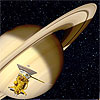
|
 |
New era of rocket launches begins at California base
A new spy satellite is circling Earth after a spectacular sendoff Tuesday evening, marking the first time such a clandestine national security spacecraft has launched aboard America's modern breed of rockets.
 FULL STORY FULL STORY
 MISSION STATUS CENTER MISSION STATUS CENTER
 IMAGES: MORE LAUNCH PHOTOS IMAGES: MORE LAUNCH PHOTOS
 IMAGES: LIFTOFF OF THE DELTA 4 IMAGES: LIFTOFF OF THE DELTA 4
 IMAGES: DELTA 4 ON THE PAD IMAGES: DELTA 4 ON THE PAD
 |  |

|
 |
Discovery astronauts arrive at the Cape for launch
The seven space shuttle Discovery astronauts flew to Kennedy Space Center on Tuesday from their training base in Houston in preparation for Saturday's planned liftoff. The launch countdown remains set to begin ticking at 5 p.m. on Wednesday.
 FULL STORY FULL STORY
 |  |

|
 |

Additional coverage for subscribers:
 VIDEO:
DISCOVERY CREW ARRIVES FOR LAUNCH PLAY VIDEO:
DISCOVERY CREW ARRIVES FOR LAUNCH PLAY
 SUBSCRIBE NOW SUBSCRIBE NOW

|
Tracking Earth's wobbles
New technologies are enabling scientists to determine precisely the extent and causes of Earth's short-term wobbling. Like a spinning top, Earth wobbles as it rotates on its axis. In fact, it displays many different wobbling motions, ranging in period from a few minutes to billions of years.
 FULL STORY FULL STORY
 |  |

|
 |
OTHER HEADLINES Additional stories today
|
 |
Lockheed Martin Atlas rocket on The History Channel -- A new show on The History Channel's Mega Movers series follows the transport of the powerful and large 191-foot Lockheed Martin Atlas 5 rocket from production facilities in Denver to the launch site at Cape Canaveral. The show is scheduled to air July 11.
|
 |
Cargo freighter makes automated docking to ISS
A supply ship reached the International Space Station on Monday, delivering over 5,000 pounds of fuel, water, spare parts and science gear. The unpiloted Progress M-57 spacecraft made its automated linkup with the Pirs docking module high above northern Africa at 12:25 p.m. EDT (1625 GMT) -- a few minutes ahead of schedule.
 FULL STORY FULL STORY
 |  |

|
 |

Additional coverage for subscribers:
 VIDEO:
PROGRESS 22P CARGO SHIP DOCKS TO ISS PLAY VIDEO:
PROGRESS 22P CARGO SHIP DOCKS TO ISS PLAY
 SUBSCRIBE NOW SUBSCRIBE NOW

|
California Delta 4 pad once hosted the space shuttle
Boeing's Delta 4 rocket pad at Vandenberg Air Force Base was renovated in recent years, transforming Space Launch Complex-6 from the West Coast space shuttle launch site into a facility for the next-generation unmanned booster. This collection of footage shows the 1985 launch pad test using NASA's orbiter Enterprise.
 |  |
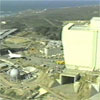
|
 |

Additional coverage for subscribers:
 VIDEO:
SOLID ROCKET BOOSTERS STACKED ON THE PAD PLAY VIDEO:
SOLID ROCKET BOOSTERS STACKED ON THE PAD PLAY
 VIDEO:
EXTERNAL FUEL TANK MATED TO THE BOOSTERS PLAY VIDEO:
EXTERNAL FUEL TANK MATED TO THE BOOSTERS PLAY
 VIDEO:
SHUTTLE ENTERPRISE ATTACHED PLAY VIDEO:
SHUTTLE ENTERPRISE ATTACHED PLAY
 SUBSCRIBE NOW SUBSCRIBE NOW

|
Russia launches secret reconnaissance satellite
A top-secret Russian military spacecraft was delivered to its perch in the high frontier after a successful launch Sunday. The payload is believed to be an electronic surveillance satellite for the Russian government.
 FULL STORY FULL STORY
 |  |

|
 |
Cluster satellites discover space bubbles near Earth
Space is fizzing. Above our heads, where the Earth's magnetic field meets the constant stream of gas from the Sun, thousands of bubbles of superheated gas are constantly growing and popping.
 FULL STORY FULL STORY
 |  |

|
 |
Latest supply ship roars toward the space station
A Russian Progress cargo freighter was successfully launched at 11:08 a.m. EDT Saturday from the Baikonur Cosmodrome bound for the International Space Station. The ship is carrying over 5,000 pounds of fuel, water, supplies and science gear to the station. Docking is planned for 12:30 p.m. EDT on Monday.
 |  |
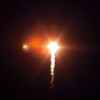
|
 |
SMART-1 probe prepares for end of its lunar mission
After sixteen months orbiting the Moon, ESA's lunar mission is preparing for the end of its scientific exploration. This week, SMART-1 mission controllers initiated a 17-day series of maneuvers aimed at positioning the spacecraft to enhance science data return as the mission winds down.
 FULL STORY FULL STORY
 |  |
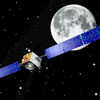
|
 |
Pluto's two newly-found moons given names
The names Nix and Hydra have been approved for the two small satellites of Pluto discovered in May 2005. In mythology, Nix is the goddess of darkness and night, befitting a satellite orbiting distant Pluto, the god of the underworld. Hydra is the terrifying monster with the body of a serpent and nine heads, befitting the outermost moon of Pluto, the ninth planet in the solar system.
 FULL STORY FULL STORY
 |  |

|
 |
Scientists find reason for black holes' light shows
A team of astronomers led by the University of Michigan may know how black holes are lighting up the Universe. New data from NASA's Chandra X-ray Observatory show, for the first time, that powerful magnetic fields are the key to these brilliant and startling light shows.
 FULL STORY FULL STORY
 |  |

|
 |
OTHER HEADLINES Additional stories today
|
 |
Early handover of GOES-N weather satellite to NASA -- Boeing has announced that GOES-N, the first of three Geostationary Operational Environmental Satellites built for NASA and NOAA, has reached its orbital slot 22,300 miles above the equator, and Boeing engineers have achieved a major milestone by transferring control of the satellite to NASA.

Mercury-bound probe flips sunshade toward the Sun -- The MESSENGER spacecraft performed its final "flip" maneuver for the mission this week, pointing its sunshade toward the Sun. The maneuver is designed to keep MESSENGER operating at safe temperatures as it moves closer to the Sun.
|
 |
Delta 2 rocket puts military experiment into space
An experimental U.S. military project to characterize the performance of two micro-satellite trailblazers operating 22,300 miles above Earth and a prototype maneuvering motor for small spacecraft began with a beautiful blastoff from Cape Canaveral Wednesday evening.
 FULL STORY - updated FULL STORY - updated
 MISSION STATUS CENTER MISSION STATUS CENTER
 IMAGES: TOWER ROLLBACK IMAGES: TOWER ROLLBACK
 IMAGES: LAUNCH OF MITEX IMAGES: LAUNCH OF MITEX
 |  |

|
 |

Additional coverage for subscribers:
 VIDEO:
DELTA 2 ROCKET LAUNCHES WITH MITEX PLAY VIDEO:
DELTA 2 ROCKET LAUNCHES WITH MITEX PLAY
 VIDEO:
WIDE-SCREEN VIEW FROM THE PRESS SITE PLAY VIDEO:
WIDE-SCREEN VIEW FROM THE PRESS SITE PLAY
 VIDEO:
LAUNCH PAD TOWER ROLLED BACK PLAY VIDEO:
LAUNCH PAD TOWER ROLLED BACK PLAY
 SUBSCRIBE NOW SUBSCRIBE NOW

|
Officials tell reporters about 'no-go' shuttle launch votes
NASA's top safety official and the agency's chief engineer said Wednesday they opposed the shuttle Discovery's launch July 1 because of concern about so-called ice-frost ramps on the ship's external tank that could shed foam and cause catastrophic impact damage. In fact, Discovery's flight will be the first in shuttle history with a system formally classified in the "unacceptable risk" category.
 FULL STORY FULL STORY
 |  |

|
 |
Opposition to flight hinges on risk to shuttle, not crew
NASA safety director Bryan O'Connor and chief engineer Chris Scolese both voted "no-go" for the shuttle Discovery's launch July 1 because of concerns foam loss could, in a worst-case scenario, lead to loss of the shuttle. But both men, in hand-written notes scribbled on NASA's official Certificate of Flight Readiness, said they did not oppose Administrator Mike Griffin's decision to proceed with launch because the crew of a damaged shuttle could move into the space station to await rescue.
 FULL STORY FULL STORY
 |  |

|
 |
Hale says no pressure due to 2010 shuttle deadline
Shuttle program manager Wayne Hale played a direct role in classifying ice-frost ramps on the shuttle's external tank as "probable/catastrophic," but he told CBS Radio Tuesday his primary intention was to elevate the issue to a level that would ensure it received the proper attention.
 FULL STORY FULL STORY
 |  |

|
 |
Safety chief, top engineer discuss shuttle decision
NASA's safety chief and the agency's top engineer said Monday in a joint statement they did not oppose launching the shuttle Discovery July 1 despite serious concern about so-called ice-frost ramps on the ship's external fuel tank.
 FULL STORY FULL STORY
 |  |

|
 |
Pace quickens for NASA spacecraft orbiting Mars
NASA's newest spacecraft at Mars has already cut the size and duration of each orbit by more than half, just 11 weeks into a 23-week process of shrinking its orbit. By other indicators, the lion's share of the job lies ahead.
 FULL STORY FULL STORY
 |  |

|
 |
OTHER HEADLINES Additional stories today
|
 |
Crew named for shuttle mission delivering Node 2 -- Astronaut Pam Melroy will lead the space shuttle flight to launch an Italian-built U.S. module for the International Space Station. She becomes just the second woman to command a space mission.

ASTRA 1KR goes operational -- SES ASTRA announces that its new satellite ASTRA 1KR has been deployed at the company's prime orbital and is now operational. The satellite was successfully launched from Cape Canaveral onboard an Atlas 5 rocket.
|
 |
HD television satellite rockets high above Earth
A new broadcasting satellite for high definition television across the United States roared into space Sunday morning from a floating platform in the Pacific Ocean. The commercial Sea Launch Zenit 3SL booster began the successful 60-minute ascent carrying the Galaxy 16 spacecraft at 0750 GMT (3:50 a.m. EDT).
 FULL STORY FULL STORY
 |  |
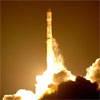
|
 |
Kazakhstan gets its first communications satellite
Kazakhstan's first national satellite was deployed into orbit after a marathon launch overnight Saturday by a Proton rocket. Once operational, the craft will link remote reaches of central Asia through broadcasting and telephone services.
 FULL STORY FULL STORY
 |  |

|
 |
Shuttle launch date set despite safety objections
NASA Administrator Mike Griffin, overruling objections from the agency's chief engineer and safety office, cleared the shuttle Discovery for launch July 1 on a mission to service and resupply the international space station. The flight also will clear the way for the resumption of station assembly later this fall and deliver a third full-time crew member to the international outpost.
 FULL STORY FULL STORY
 LAUNCH WINDOWS CHART LAUNCH WINDOWS CHART
 ASCENT DATA PACKET ASCENT DATA PACKET
 SHUTTLE/ISS CALENDAR SHUTTLE/ISS CALENDAR
 |  |

|
 |

Additional coverage for subscribers:
 VIDEO:
RATIONALE FOR LAUNCH EXPLAINED DIAL-UP | BROADBAND VIDEO:
RATIONALE FOR LAUNCH EXPLAINED DIAL-UP | BROADBAND
 AUDIO:
LISTEN TO EXPLANATION FOR IPOD AUDIO:
LISTEN TO EXPLANATION FOR IPOD
 MORE: STS-121 VIDEO COVERAGE MORE: STS-121 VIDEO COVERAGE
 SUBSCRIBE NOW SUBSCRIBE NOW

|
Debate still rages about shuttle fuel tank foam risks
NASA managers met at the Kennedy Space Center Friday to formally review the shuttle Discovery's flight processing and its readiness for launch as early as July 1. One major item on the agenda is a discussion of the threat posed by foam making up so-called ice-frost ramps on the shuttle's external tank.
 FULL STORY FULL STORY
 |  |

|
 |

Additional coverage for subscribers:
 VIDEO:
CREW TALKS ABOUT RISKS OF SPACEFLIGHT PLAY VIDEO:
CREW TALKS ABOUT RISKS OF SPACEFLIGHT PLAY
 SUBSCRIBE NOW SUBSCRIBE NOW

|
Pluto-bound New Horizons tracks an asteroid
It's a small object with big news for the New Horizons team: the first spacecraft to Pluto tested its tracking and imaging capabilities this week on asteroid 2002 JF56, a relatively tiny space rock orbiting in the asteroid belt.
 FULL STORY FULL STORY
 |  |

|
 |
Control system tests begin for Vega's main engine
Development of Vega, Europe's new launcher for small payloads, continues at full speed. A dedicated test facility for the directional control system of the main engine has been completed and performance measurements are under way.
 FULL STORY FULL STORY
 |  |

|
 |
Crew boards shuttle for countdown rehearsal
Space shuttle Discovery's seven astronauts climbed aboard their spaceship at launch pad 39B Thursday morning for the final three hours of a mock countdown that ended with a simulated main engine shutdown and crew evacuation.
 FULL STORY FULL STORY
 |  |

|
 |

Additional coverage for subscribers:
 VIDEO:
ASTRONAUTS DEPART QUARTERS FOR LAUNCH PAD PLAY VIDEO:
ASTRONAUTS DEPART QUARTERS FOR LAUNCH PAD PLAY
 VIDEO:
CREW DONS LAUNCH AND ENTRY SPACESUITS PLAY VIDEO:
CREW DONS LAUNCH AND ENTRY SPACESUITS PLAY
 VIDEO:
BREAKFAST ON PRACTICE COUNTDOWN DAY PLAY VIDEO:
BREAKFAST ON PRACTICE COUNTDOWN DAY PLAY
 SUBSCRIBE NOW SUBSCRIBE NOW

|
Civil remote sensing craft launched by Russia
A Russian Soyuz rocket launched a civilian Earth observation satellite into orbit today to begin a three-year mission to keep tabs on natural resources and emergencies from space for both government and commercial users. The payload was the first such craft launched since 1999.
 FULL STORY FULL STORY
 |  |

|
 |
Space shuttle crew fields questions at launch pad
The Discovery astronauts reviewed emergency procedures at the launch pad Wednesday and geared up for a dress-rehearsal countdown Thursday that will set the stage for a major management review Friday and Saturday to set an official launch date. Discovery's launch window opens July 1 and if commander Steve Lindsey has anything to say about it, that's the date management will pick.
 FULL STORY FULL STORY
 |  |

|
 |

Additional coverage for subscribers:
 VIDEO:
WEDNESDAY'S PAD CHAT WITH CREW DIAL-UP | BROADBAND VIDEO:
WEDNESDAY'S PAD CHAT WITH CREW DIAL-UP | BROADBAND
 SUBSCRIBE NOW SUBSCRIBE NOW

|
Milky Way's sister galaxy shines in new portrait
Sibling rivalry is alive and well in outer space. The Milky Way galaxy has two sister spirals competing for attention from photographers. The Andromeda galaxy usually wins the contest, posing frequently for cosmic portraits. In this new image from the MMT Observatory, the second sister finally gets her due notice. Here, the Triangulum galaxy emerges from the shadows to reveal stunning swirls of stars and dust dotted with brilliant pink nebulae.
 FULL STORY FULL STORY
 |  |

|
 |
Researchers explain gas planet satellite systems
Each of our Solar System's outer gaseous planets hosts a system of multiple satellites, and these objects include Jupiter's volcanic Io and Europa with its believed subsurface ocean, as well as Titan with its dense and organic-rich atmosphere at Saturn. While individual satellite properties vary, the systems all share a striking similarity: the total mass of each satellite system compared to the mass of its host planet is very nearly a constant ratio, roughly 1:10,000.
 FULL STORY FULL STORY
 |  |

|
 |
Hubble observes star birth in the extreme
Staring into the crowded, dusty core of two merging galaxies, NASA's Hubble Space Telescope has uncovered a region where star formation has gone wild.
 FULL STORY FULL STORY
 |  |

|
 |
Discovery astronauts arrive for practice countdown
The shuttle Discovery's crew, running a day late because of tropical storm Alberto, flew to the Kennedy Space Center Tuesday to practice emergency procedures and take part in a dress rehearsal countdown Thursday.
 FULL STORY FULL STORY
 MISSION FLIGHT PLAN MISSION FLIGHT PLAN
 TIMELINE WALKTHROUGH TIMELINE WALKTHROUGH
 LAUNCH WINDOWS CHART LAUNCH WINDOWS CHART
 SHUTTLE/ISS CALENDAR SHUTTLE/ISS CALENDAR
 |  |

|
 |

Additional coverage for subscribers:
 VIDEO:
CREW ARRIVES FOR PRACTICE COUNTDOWN PLAY VIDEO:
CREW ARRIVES FOR PRACTICE COUNTDOWN PLAY
 VIDEO:
COMMENTS FROM THE COMMANDER PLAY VIDEO:
COMMENTS FROM THE COMMANDER PLAY

 VIDEO:
SHUTTLE MISSION PREVIEW DIAL-UP | BROADBAND VIDEO:
SHUTTLE MISSION PREVIEW DIAL-UP | BROADBAND
 VIDEO:
STATION ACTIVITIES ON STS-121 DIAL-UP | BROADBAND VIDEO:
STATION ACTIVITIES ON STS-121 DIAL-UP | BROADBAND
 VIDEO:
PREVIEW OF DISCOVERY'S SPACEWALKS DIAL-UP | BROADBAND VIDEO:
PREVIEW OF DISCOVERY'S SPACEWALKS DIAL-UP | BROADBAND
 VIDEO:
THE ASTRONAUTS MEET THE PRESS DIAL-UP | BROADBAND VIDEO:
THE ASTRONAUTS MEET THE PRESS DIAL-UP | BROADBAND
 VIDEO: SHUTTLE AND ISS PROGRAM PERSPECTIVE VIDEO: SHUTTLE AND ISS PROGRAM PERSPECTIVE
DIAL-UP: part 1 and part 2
BROADBAND: part 1 and part 2
 SUBSCRIBE NOW SUBSCRIBE NOW

|
Final micro-satellite delivered for THEMIS
Swales Aerospace announced the delivery of the last of five THEMIS micro-satellite spacecraft buses. THEMIS is NASA's first scientific research micro-satellite constellation consisting of five identical satellites flying in the Earth's magnetosphere, a region of the upper atmosphere extending for hundreds of thousands of miles.
 FULL STORY FULL STORY
 |  |

|
 |
Telescope spots greatest of great balls of fire
Thanks to data from the European Space Agency's XMM-Newton X-ray satellite, a team of international scientists found a comet-like ball of gas over a thousand million times the mass of the sun hurling through a distant galaxy cluster over 750 kilometres per second. This colossal "ball of fire" is by far the largest object of this kind ever identified.
 FULL STORY FULL STORY
 |  |

|
 |
A moon's telltale tail
The plumes of Enceladus continue to gush icy particles into Saturn orbit, making this little moon one of a select group of geologically active bodies in the solar system. Enceladus is seen here against the night side of Saturn. The extended exposure time used to image the plumes also makes the southern hemisphere, illuminated by ring-shine, appear bright.
 FULL STORY FULL STORY
 |  |

|
 |
OTHER HEADLINES Additional stories today
|
 |
Sea Launch awarded assignment for Thuraya-3 -- In a contract signed with Boeing Satellite Systems International, a Sea Launch Zenit-3SL vehicle will lift the Thuraya-3 satellite to geosynchronous transfer orbit from Sea Launch's equatorial launch site in the Pacific Ocean in January 2007.
|
 |
Massive star's death and the dusty universe
When the universe was only 700 million years old, some of its galaxies were already filled with lots of dust. But where did all of this dust come from? Astronomers using NASA's Spitzer Space Telescope think they may have found the source in type II supernovae, the violent explosions of the universe's most massive stars.
 FULL STORY FULL STORY
 |  |

|
 |
Astronomers: Star fuel may be caught in cosmic web
Astronomers have detected substantial amounts of filamentary, cold gas in compact groups of galaxies, highlighting what may be an important force in galactic evolution, scientists say. The findings also raise the intriguing possibility that more matter than previously thought may be tied up in these galaxy groups, captured in the lattice of the cosmic web.
 FULL STORY FULL STORY
 |  |

|
 |
A sight to behold
The "eyes" of Cassini -- its powerful imaging cameras -- bear witness to the majestic and spectacular sights of the Saturn system, as this views attests. Here, the probe gazes upon Titan in the distance beyond Saturn and its dark and graceful rings.
 FULL STORY FULL STORY
 |  |

|
 |
Air Force Space Command was crucial in Zarqawi hit
Air Force Space Command delivered space combat effects for the precision strike that resulted in the death of terrorist leader Abu Musab Al-Zarqawi, head of al-Qaeda in Iraq. A Global Positioning System-aided bomb was one of the two munitions used in striking Zarqawi's last safe house.
 FULL STORY FULL STORY
 |  |
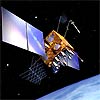
|
 |
Quark stars may hold keys to quantum mysteries
Quarks, the smallest building blocks of all matter, are mysterious and elusive -- so elusive, in fact, that scientists can only study them by smashing subatomic particles against one another at super-high speeds so they break into their constituent parts. The resulting quarks stick around for a fleeting moment, and then they instantaneously recombine.
 FULL STORY FULL STORY
 |  |

|
 |
Hubble sees galaxy on edge
Hubble Space Telescope gives this unique view of the disk galaxy NGC 5866 tilted nearly edge-on to our line-of-sight. Hubble's sharp vision reveals a crisp dust lane dividing the galaxy into two halves. The image highlights the galaxy's structure: a subtle, reddish bulge surrounding a bright nucleus, a blue disk of stars running parallel to the dust lane, and a transparent outer halo.
 FULL STORY FULL STORY
 |  |

|
 |
Heat is on in Andromeda
This color-coded Chandra image (red/low energy, green/medium energy, and blue/high-energy X-rays) shows the central region of the Andromeda Galaxy, a.k.a. M31, where a diffuse, X-ray emitting cloud of hot gas was discovered in the midst of a collection of point-like sources.
 FULL STORY FULL STORY
 |  |

|
 |
OTHER HEADLINES Additional stories today
|
 |
Loral to build new craft for Sirius Satellite Radio -- Space Systems/Loral announced that it has been chosen by Sirius Satellite Radio Inc. to build SIRIUS FM-5, a powerful new geostationary satellite for use in its satellite radio service.

ARABSAT orders new satellite from EADS Astrium -- EADS Astrium and ARABSAT, the communications satellite operator based in Riyadh, Saudi Arabia, have signed a contract for the construction of the BADR-6 satellite. Scheduled to enter service in 2008, BADR-6 will provide communications services over a wide area encompassing the entire Middle East and North Africa region, from Morocco to the Gulf, and a large part of sub-Saharan Africa.
|
 |
Discovery's fuel tank receives certification
NASA managers Wednesday cleared the shuttle Discovery's external fuel tank for flight based on wind tunnel data and computer modeling that show the huge tank can stand up to the aerodynamic rigors of launch despite the recent removal of long foam wind deflectors. Launch currently is targeted for July 1, but the long-awaited flight could slip another day or so to ensure better lighting for critical photography of the tank after Discovery reaches orbit.
 FULL STORY FULL STORY
 |  |

|
 |
Observatory finds solar system awash in carbon
Scientists using NASA's Far Ultraviolet Spectroscopic Explorer, or FUSE, have discovered abundant amounts of carbon gas in a dusty disk surrounding a young star named Beta Pictoris.
 FULL STORY FULL STORY
 |  |

|
 |
Astronomers find a galactic highway in the sky
A long, slender stream of ancient stars has been discovered racing across the northern sky. The stream is about 30,000 light years distant from Earth and is flowing high over the Milky Way Galaxy at some 230 kilometers per second, or more than half a million miles per hour.
 FULL STORY FULL STORY
 |  |

|
 |
Ancient rock carving linked to astronomical event?
Two astronomers announced this week what is believed to be a link between a historical stellar event and the meaning behind an ancient symbol. They say an early rock carving, or petroglyph, found in the White Tanks Regional Park in Arizona depicts the well-known supernova of A.D. 1006. The petroglyph is located in an area once occupied by prehistoric Native Americans called the Hohokam.
 FULL STORY FULL STORY
 |  |

|
 |
Distant cosmic ball of dust not dusty enough
One of the youngest supernova remnants known, a glowing red ball of dust created by the explosion 1,000 years ago of a supermassive star in a nearby galaxy, the Small Magellanic Cloud, exhibits the same problem as exploding stars in our own galaxy: too little dust.
 FULL STORY FULL STORY
 |  |

|
 |
Astronomers find "cities" of galaxies with Spitzer
A team of astronomers using NASA's Spitzer Space Telescope has discovered a grand total of nearly 300 clusters of galaxies. Almost 100 of these are as far as 8 to 10 billion light-years away, which means they date back to a time when our universe was less than half its present age.
 FULL STORY FULL STORY
 |  |

|
 |
Atlas rocket to launch Mars Science Laboratory
Lockheed Martin's Atlas 5 rocket has been selected by NASA to launch the Mars Science Laboratory mission in 2009 from Cape Canaveral. The mission will fly on a powerful Atlas 5-541 configuration to propel MSL on its journey to the red planet.
 FULL STORY FULL STORY
 |  |

|
 |
Jupiter's big brother has moon-forming dust disk
Earth's Moon was created by an early collision with another large planetary body. It was a "chip off the old block." Mars captured its asteroidal moons as they passed by. But Jupiter made its own moons out of dust and gas remaining from its formation. Now, observations by astronomers provide the first direct evidence for a dusty disk around a distant planet that in mass would be Jupiter's "big brother."
 FULL STORY FULL STORY
 |  |

|
 |
NASA unveils distribution of Constellation work
NASA announced Monday agency center responsibilities associated with the Constellation Program for robotic and human moon and Mars exploration. Officials said the distribution will productively use personnel, facilities and resources to accomplish the Vision for Space Exploration.
 FULL STORY FULL STORY
 |  |

|
 |

Additional coverage for subscribers:
 VIDEO: ANNOUNCEMENT OF CONSTELLATION WORK ASSIGNMENTS VIDEO: ANNOUNCEMENT OF CONSTELLATION WORK ASSIGNMENTS
DIAL-UP: part 1 and part 2
BROADBAND: part 1 and part 2
 VIDEO:
NEWS CONFERENCE ON THE WORK PLAN DIAL-UP | BROADBAND VIDEO:
NEWS CONFERENCE ON THE WORK PLAN DIAL-UP | BROADBAND

 SUBSCRIBE NOW SUBSCRIBE NOW

|
Study: 'Planemos' may spawn planets and moons
Forget our traditional ideas of where a planetary system forms - new research led by a University of Toronto astronomer reveals that planetary nurseries can exist not only around stars but also around objects that are themselves not much heftier than Jupiter. It suggests that miniature versions of the solar system may circle objects that are some 100 times less massive than our sun.
 FULL STORY FULL STORY
 |  |

|
 |
Andromeda adrift in sea of dust in new Spitzer image
The Andromeda galaxy, named for the mythological princess who almost fell prey to a sea monster, appears tranquil in a new image from NASA's Spitzer Space Telescope. The mesmerizing infrared mosaic shows red waves of dust over a blue sea of stars.
 FULL STORY FULL STORY
 |  |

|
 |
Ancient killer crater found under Antarctic ice
Planetary scientists have found evidence of a meteor impact much larger and earlier than the one that killed the dinosaurs -- an impact that they believe caused the biggest mass extinction in Earth's history.
 FULL STORY FULL STORY
 |  |

|
 |
Pile of rubble a record of solar system's history
A small, near-Earth asteroid named Itokawa is just a pile of floating rubble, probably created from the breakup of an ancient planet, according to a University of Michigan researcher who was part of the Japanese space mission Hayabusa.
 FULL STORY FULL STORY
 |  |

|
 |
OTHER HEADLINES Additional stories today
|
 |
Columbus space lab set for 2007 launch to station -- The large Columbus orbital laboratory module, built by EADS as part of Europe's contribution to the International Space Station, has been delivered to Kennedy Space Center for launch next year. Columbus will significantly increase the station's capacity to carry out experimentation in biotechnology, medicine, materials sciences, fluids sciences, human sciences and applied technology.

Swales to build TacSat-3 military spacecraft -- Swales Aerospace announced Friday that it has been awarded an order from the Air Force to design, build and test the Operationally Responsive Space Modular Bus (ORSMB) for the TacSat-3 mission, which will demonstrate the ability of a tactical satellite to collect militarily useful data over a theatre of interest and provide that data direct to the warfighter in real-time.
|
 |
Interstellar Boundary Explorer enters new phase
Just as the Voyager 2 spacecraft is approaching the edge of our solar system, Southwest Research Institute received official confirmation from NASA Headquarters to proceed into the mission implementation phase for the Interstellar Boundary Explorer mission. IBEX, which will provide global images of the interstellar boundary, the region between our solar system and interstellar space, is scheduled to launch in June 2008.
 FULL STORY FULL STORY
 |  |

|
 |
The case of the neutron star with a wayward wake
A long observation with NASA's Chandra X-ray Observatory revealed important new details of a neutron star that is spewing out a wake of high-energy particles as it races through space. The deduced location of the neutron star on the edge of a supernova remnant, and the peculiar orientation of the neutron star wake, pose mysteries that remain unresolved.
 FULL STORY FULL STORY
 |  |

|
 |
ISS crew ventures outside for maintenance chores
Space station commander Pavel Vinogradov and astronaut Jeff Williams completed a six-and-a-half hour spacewalk Thursday evening to install a new vent for a Russian oxygen generator and to replace a camera mounted on the U.S. segment. They also performed a bit of maintenance, inspecting cables that may be interfering with the operation of an antenna and a rocket thruster. The EVA lasted from 6:48 p.m. to 1:19 a.m. EDT.
 FULL STORY FULL STORY
 PREVIEW STORY PREVIEW STORY
 |  |

|
 |

Additional coverage for subscribers:
 VIDEO: SPACE STATION SPACEWALK OVERVIEW VIDEO: SPACE STATION SPACEWALK OVERVIEW
DIAL-UP: part 1 and part 2
BROADBAND: part 1 and part 2

 SUBSCRIBE NOW SUBSCRIBE NOW

|
Environmental tests for Wideband Gapfiller Satellite
The first of three Wideband Gapfiller Satellites developed by The Boeing Company has successfully completed key dynamic environmental tests, confirming the spacecraft's structural design and mechanical integrity.
 FULL STORY FULL STORY
 |  |

|
 |
OTHER HEADLINES Additional stories today
|
 |
Orbital to build 6 payloads for ORBCOMM -- Orbital Sciences Corporation announced Thursday that ORBCOMM, Inc., has awarded the company a $17 million contract to supply six data communications payloads. Orbital is scheduled to complete the delivery of the payloads by mid-2007.

AMC-21 satellite to fly on Land Launch -- SES GLOBAL announces that it has contracted with the Sea Launch Company for a mission on its Land Launch system, to send the AMC-21 spacecraft into orbit in mid-2008. A Zenit-3SLB vehicle will launch the satellite into geosynchronous transfer orbit from the Baikonur Space Center in Kazakhstan.
|
 |
|
Read our earlier news archive page.
|



